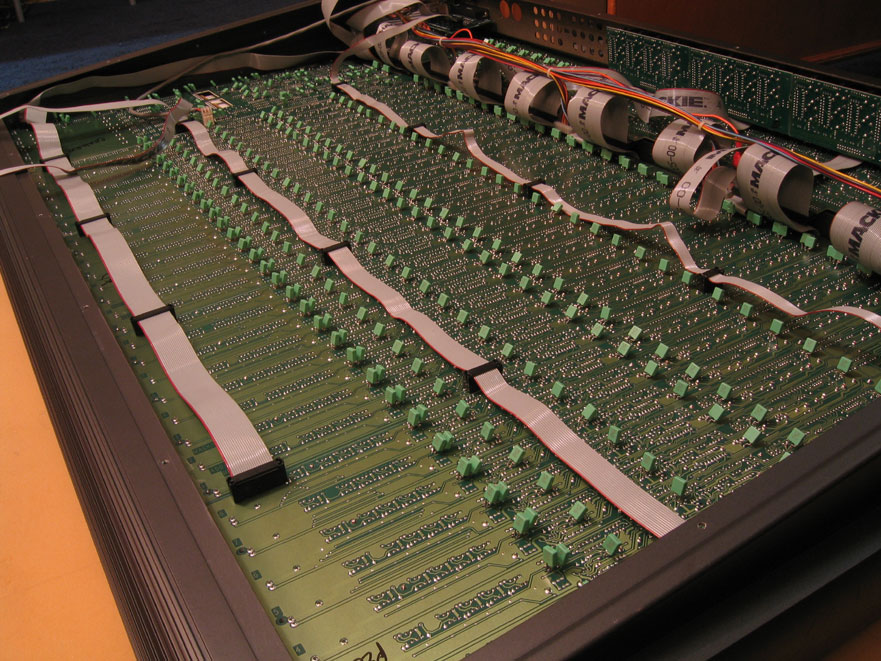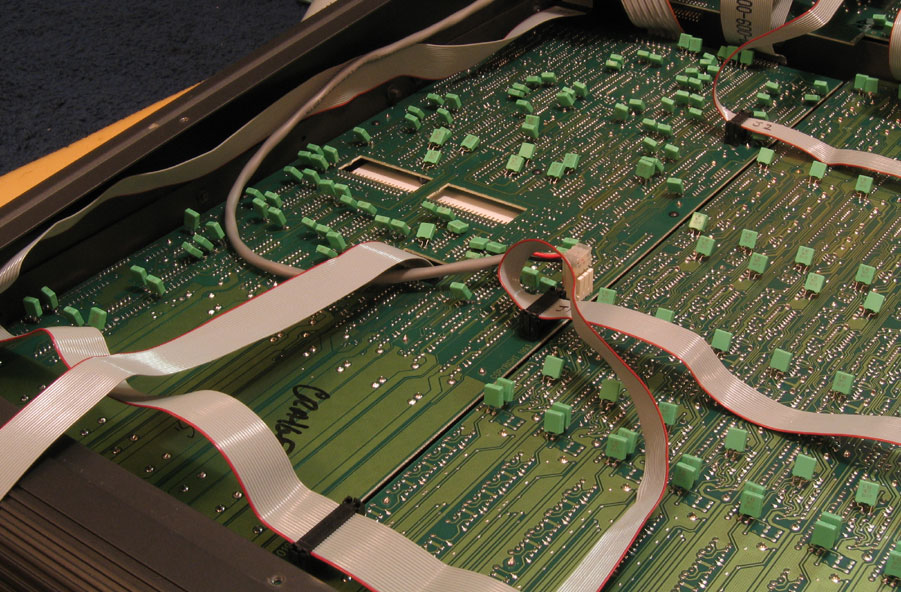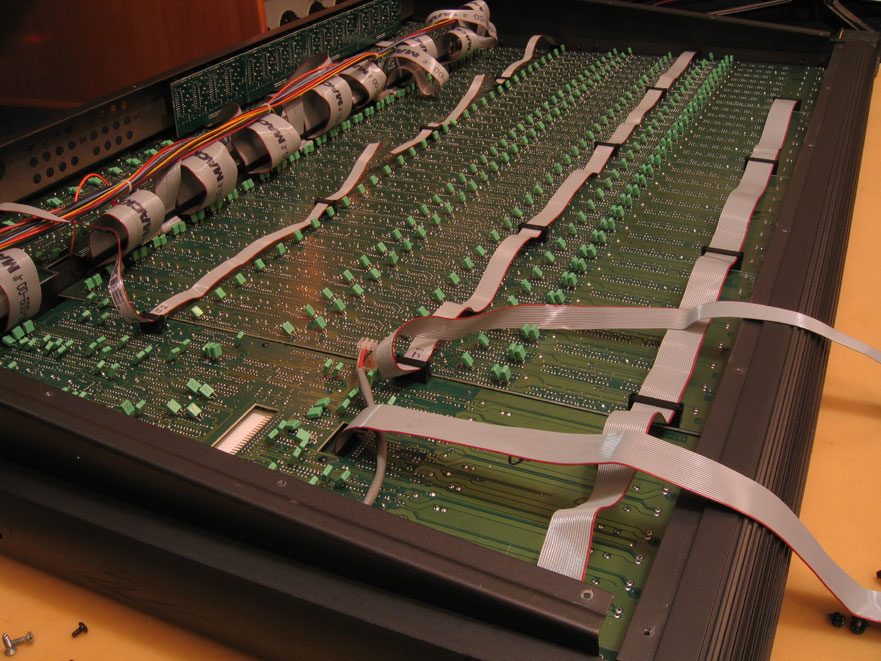Some of you will wonder why: Mackie 32-8 console with film bypass caps added to audio signal coupling electrolytics. I did this in stages, and compared sound as I went. First a pair of channels to compare against stock, then the more important parts of the master section, then the rest. I wound up doing the whole console in two or three sessions. Maybe 10 total hours of actual labor. Many more analyzing the circuit board drawings and marking the terminals before starting; maybe $120 worth of caps. I felt it was a significant improvement in clarity, distortion, and 'speed'. The console already had a good bit of age on it, and that may well have bearing on the improvements realized.
cap prep stages; x 600ish. These had to be floated off the back side of the circuit boards, and match the spacing of the existing electrolytics:


channels:

master section:


cap prep stages; x 600ish. These had to be floated off the back side of the circuit boards, and match the spacing of the existing electrolytics:


channels:

master section:







![Electronics Soldering Iron Kit, [Upgraded] Soldering Iron 110V 90W LCD Digital Portable Soldering Kit 180-480℃(356-896℉), Welding Tool with ON/OFF Switch, Auto-sleep, Thermostatic Design](https://m.media-amazon.com/images/I/41gRDnlyfJS._SL500_.jpg)


























